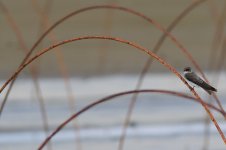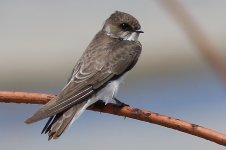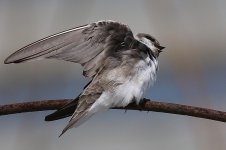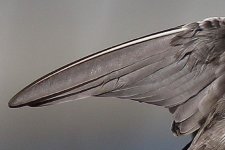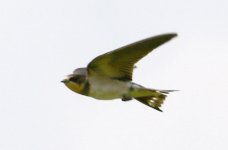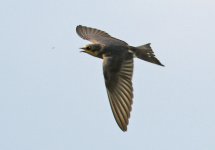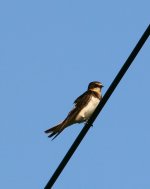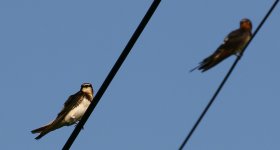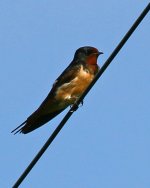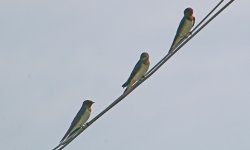Thank you Steve,
We have huge numbers of breeding Barn Swallows, and in August the flocks flying to roost over the Old Palace Site in the centre of the city attracts a lot of visitors (and Goshawks). In spring and late-August to mid-September we get quite a few Red-rumped Swallows feeding up before departure. The nearest place I know that they breed is under a bridge about 20km away. This year they seem to have done well, as the numbers here in the city have been larger than usual.
Because of this thread, I went out yesterday to see if there was anything else mixed in with the two swallows, and this one bird stood out, and luckily I was able to get a few photos. So, it looks like it must be annual in small numbers here. The swallows can be seen resting on wires, but I've never come across the martin resting, as in your lovely photos.
Thanks again; I've learned something, and got a bit more confident about what to look for.
Cheers, Mac.
Most of the swallows here (migrant or otherwise) prefer to sit on overhead wires, too, where they are never at the best of angles for photography.
Fortunately, the Riparia martins have a peculiar fondness of these hoops that the farmers put up towards the end of summer. Once the wet season has passed, they (the farmers) will drag polythene sheets over these to protect whatever crop they have growing below (watermelons, I think), meaning that overnight all the perches will have gone. This leaves only a very short window of opportunity to get close to these birds at a nice, waist-high level. Fortunately, that 'window' coincides with the arrival of Pale/Sand/'Whatever-they-are' Martins into the area.
Once the area has dried out completely (early October), all the Grey-throated Sand Martins (all 5-10,000 of them) will disperse, taking whatever other hirundines were in amongst them with them elsewhere.
Steve




